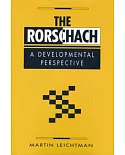Within the past two generations alone, child and adolescent obesity has more than doubled for some age groups and tripled for others. Consequently, the extraordinary number of school-age
children now being diagnosed with what were once considered adult-onset disorders - hypertension, type 2 diabetes, high cholesterol, and related cardio-pulmonary conditions - has catapulted
pediatric obesity to the forefront of national attention. Yet even as recognition grows, reliable, scientifically tested information and methods often get lost in the media crush of quick fixes
and hyped-up news stories. Now, in one comprehensive, easy-to-access volume, the Handbook of Childhood and Adolescent Obesity reveals the scope of the problem in terms of its psychological
burden, its health consequences, and the available prevention and treatment options with the most current empirical and clinical knowledge available. This volume provides readers not only raw
data, but also a framework for translating findings into effective, efficient practice - assessment, treatment, and prevention. This volume:Emphasizes developmental considerations - the
specific information most relevant to toddlers, school-age children, and adolescents.Examines sociocultural and economic risk factors and their attendant treatment issues.Addresses the
particular challenges of treating overweight children with psychiatric comorbidities.Discusses weight management intervention strategies in home, school, and community settings.Outlines model
intervention programs for overweight/obese children and youth.Features special chapters on emerging topics of interest, including behavioral genetics, binge eating, technology-based approaches
to weight control, and the concept of the obesigenic environment.The Handbook of Childhood and Adolescent Obesity is a vital reference for child psychologists and psychiatrists as well as
school and counseling psychologists, social workers, educators, and public health and medical professionals.





















